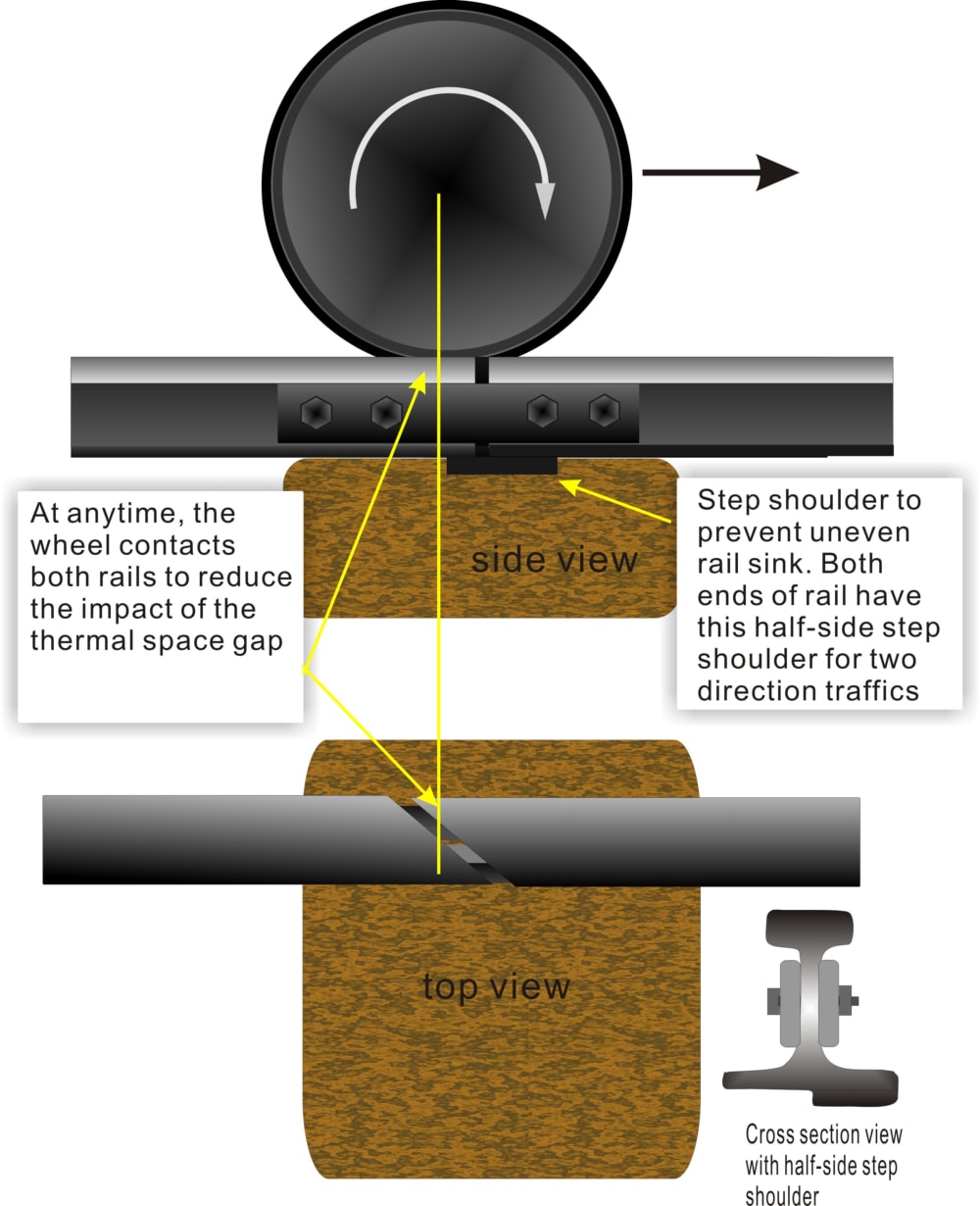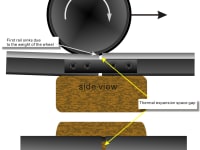Between two railway rails there must be a thermal space gap to accommodate the steel track thermal expansion due to environment temperature change. When a railway car’s wheel passes this gap, it causes impact between wheel and track and causes vibration. It also causes material fatigue, equipment wear, and energy losses. What is worse, due to the weight of the car, when the wheel approaches the gap, the first rail will sink and causes an uneven connection which causes more damage. This phenomenon becomes more important for high speed trains. Here I proposal a simple solution. To make the two rails’ connect surface to have an angle so that before the wheel leaves the first rail, it already lands on the second rail. Thus, at any time in this gap-transaction, the wheel always contacts the rail. To address the first rail sink problem, I also suggest that a half-side enforced step shoulder to be added at the end of the rail for even sink of both rails.
Like this entry?
-
About the Entrant
- Name:Chang Shen
- Type of entry:individual
- Patent status:none





